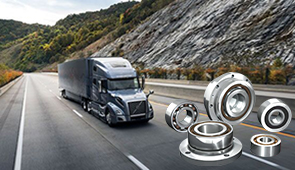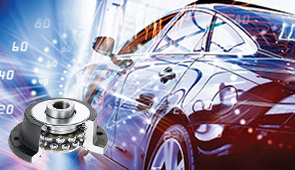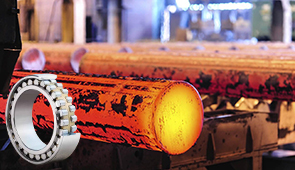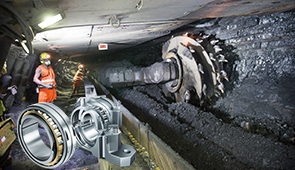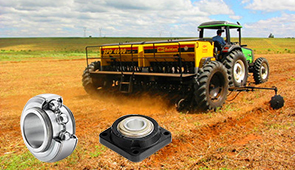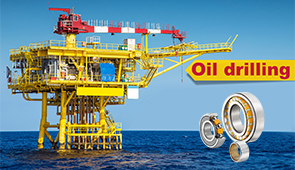Understanding the Difference Between Ball Bearings and Roller Bearings
Bearings are a crucial component in countless machines and mechanical systems, ensuring smooth operation and reducing friction between moving parts. Among the most common types, ball bearings and roller bearings play indispensable roles across industries ranging from automotive to aerospace. However, despite their widespread use, many are unaware of the critical differences that set these two types of bearings apart. Understanding these distinctions is key to selecting the right bearing for specific applications, optimizing performance, and prolonging machinery life. This article aims to demystify the topic, providing a detailed comparison to help you make informed decisions when faced with the choice between ball bearings and roller bearings.
What Are Roller Bearings?
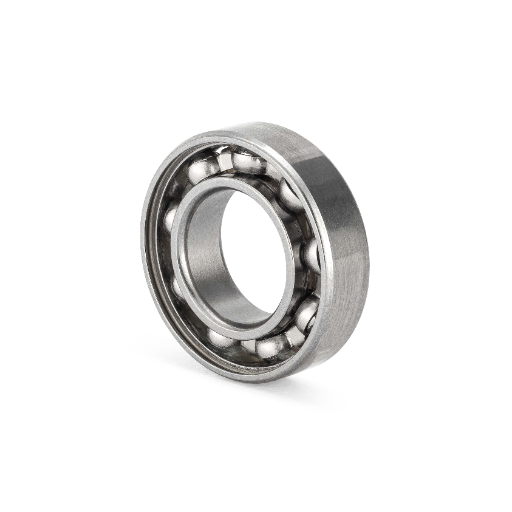
Types of Roller Bearings
Roller bearings are a subclass of rolling-element bearings with a cylindrical, tapered, spherical, or needle-shaped geometry that can sustain both radial and axial loads. They are built to withstand high loads and are widely used in industrial machinery, automobiles, and heavy equipment. The following are the most prominent categories of roller bearings:
- Bearings with Cylindrical Rollers
Cylindrical roller bearings utilize cylindrical-shaped rollers. These rollers make contact along the length of the roller, enabling them to handle high radial loads and moderate axial loads. Suitable for high-speed applications, these bearings are used in gearboxes, electric motors, and machinery spindles where precise alignment, minimal wear, and friction are paramount.
- Roller Bearings with Tapered Rollers
These bearings have conical rollers and raceways that can sustain both radial and axial loads individually and jointly. This allows them to be used where combined loading is present. Common applications of these are found in automotive wheel hubs, gear systems, and industrial equipment where they need to be sustained under dynamic conditions without suffering from load-efficient failure.
- Bearings with Spherical Rollers
Spherical roller bearings are composed of spherical-shaped rollers that give the bearing the ability to sustain angular misalignment while still being able to carry loads. This feature permits them to be used in the mining, construction, and other heavy-duty industries that experience shaft misalignment and impact loads.
- Needle Roller Bearings
The classification of needle roller bearings includes: bearings with receiver, with fixing rim, with outer rims, and stand-alone bearings. Heavy-duty applications, accurately shaped supporting surfaces, and cylindrical holes can be achieved with this design. Furthermore, these bearings are useful for machines with scrapers and other limited space devices.
Roller bearings are classified as rolling-element bearings by the use of a cylinder, cone, sphere, or needle. Each type possesses specific features designed for certain operational requirements, which emphasizes that the right roller bearing is chosen so that machinery efficiency and reliability are improved.
How Roller Bearings Work
Friction between the shaft and its supports can be minimised using roller bearings, making it possible for the shaft to rotate smoothly. Their construction includes an inner ring, outer ring, a cage, and an element that rolls (cylindrical, needle-like, or spherical). Rolling elements carry the load, but to do so efficiently while elongating the lifespan of the machinery, the contact made has to be minimal in surface area and friction-based.
The design enables the balance of load to be distributed evenly across the rollers whilst they manage both radial and axial loads. This must be done depending on the type of roller bearing. For example, semi-active radial bearing allows management of heavy radial loads, whereas tapered roller bearings combine radial and axial loads. To maximize the benefits, all parts need to be lubricated, bearing suitably aligned, and all undergo thorough rotation to reduce wear and energy consumption.
Roller bearings are critical components in many machines, including automotive and heavy-duty machines, because they support both rotational and linear movements under high loads efficiently. The reliability and durability of the components under varying operational stresses are ensured by the quality of materials and precise manufacturing for bearing rollers and housing parts. In engineering systems, a clear understanding of the design and adequate application greatly maximizes performance.
Applications of Roller Bearings
The ability to efficiently manage radial and axial loads makes roller bearings helpful in an assortment of industries. Their main contribution is noticed in the smooth motion transmission and friction mitigation in the moving parts of the machinery. To illustrate, the automotive industry makes extensive use of roller bearings in gearboxes, wheel hubs, and transmissions. In these applications, roller bearings minimize power losses while optimizing performance and sustaining heavy loads at varying speeds.
In heavy machinery and industrial equipment, roller bearings are crucial in conveyor systems, presses, and rotating shafts. These bearings are engineered to endure substantial loads and prolonged operational hours in harsh working conditions, thus underscoring their importance in manufacturing and construction environments. Moreover, roller bearings contribute to heightened energy efficiency by lessening the torque needed to operate machines.
Dependable functionality during extreme stresses and temperatures is essential in the aerospace and energy sectors, making them important areas of applicability of roller bearings. As an example, these bearings are implemented in jet engines, turbines, and wind energy systems. Their strong construction design improves operational life while bolstering safety and system performance in advanced engineering applications.
Exploring Ball Bearings
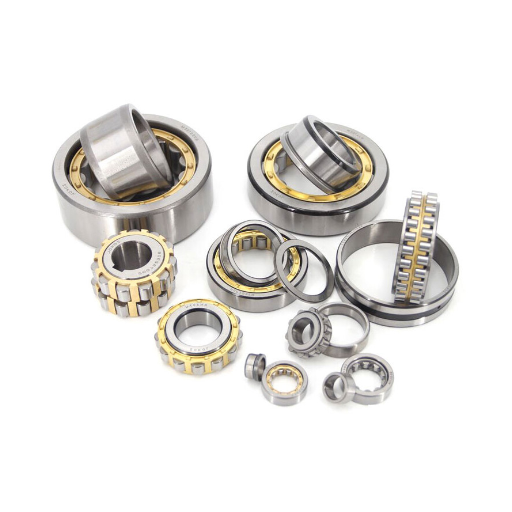
Types of Ball Bearings
Ball bearings are extensively employed and adaptable bearings that reduce rotational friction while enabling axial and radial loads in different systems. They can be classified into the following:
- Deep Groove Ball Bearings
This is the most general classification of ball bearings that is meant to carry radial loads and moderate axial loads. DGBB can be maintained at greater speeds with little servicing because they are simpler in design and construction. This type of bearing is used in appliances, electric motors, as well as automotive systems.
- Angular Contact Ball Bearings
This type of bearing is capable of taking on radial loads along with high axial loads. The contact angle of the raceways allows thrust loads to be supported axially, which encourages use on high-power machines such as gearboxes or centrifugal pumps.
- Self-Aligning Ball Bearings
These are the bearings that have two rows of balls and a common outer raceway, which is spherical. Self-Aligning Ball Bearings are tolerant of shaft misalignment. This feature enables the SAB to shift angles common in agricultural as well as textile machinery.
- Thrust Ball Bearings
Thrust ball bearings are used in applications that involve high-speed axial loads. Because of their structure, they cannot endure significant radial loads. Torque converters in automobiles, as well as machine tool spindle bearings, are some of the common applications of thrust ball bearings.
- Miniature Ball Bearings
Robotics, compact electronics, medical instruments, and other precision devices that have weight and space restraints heavily utilize these compact-sized ball bearings.
- Ceramic Ball Bearings
Bearings that are used in high-care extreme condition applications such as high-speed machining or aerospace systems are made with steel and require special features, thus using ceramic balls, which reduce weight, tolerance to temperature, and thermal expansion.
Different types of ball bearings are used depending on the operational environment, performance considerations, and the amount of load to be supported. In conjunction with these diverse settings, ball bearings become a vital component of different industries. Each application has a specific design in mind which, if selected with the right bearing, would result in improved operational efficiency, extended service life, lower maintenance expenses, and reduced service life.
Advantages of Using Ball Bearings
Bearings are a crucial element of modern machinery because of the considerable benefits they offer. Listed below are five benefits along with their application:
- Reduced Frictional Resistance
The operation of mechanical systems is subject to energy losses. Nonetheless, frictional resistance using electric motors can be reduced by 30%. This illustrates that ball bearings bear smooth functioning.
- Increased Load Capacity
The self-contained radial bearings are capable of withstanding both radial and axial loads. More robust materials have been developed, enabling angular contact ball bearings to counter higher axial forces, making them useful in turbine engines and robotic arms.
- Improved Battery Life
Ceramics and steel make up the bulk of the ball bearings, which give enhanced resistance to wear and tear. Bearings fitted with additional lubrication and seals also increase battery life by approximately 50%. Such improvements are highly useful for deployments in high-speed applications or areas with exposure to contaminants.
- Precision and Control
Bearings are capable of maintaining their precision even at high levels of rotation. This allows industries to achieve high levels of control accuracy from their device, as gyroscopes or surgical robots, enabling aerospace and medical industries to reap the benefits.
- Versatility Across Applications
The configurations, materials, and sizes of ball bearings are versatile, making them applicable across various industries. Miniature ball bearings, for example, are utilized in the hard drives of personal computers, while larger ball bearings endure heavy loads in construction equipment.
The implementation of ball bearings within mechanical systems enhances operational efficiency; they also reduce maintenance requirements, translating into further cost reductions over time.
Common Uses for Ball Bearings
Due to their capacity to minimize rotational friction while enabling radial and axial load support, ball bearings are critical in a range of mechanical systems. One crucial instance is in the automotive sector, where ball bearings facilitate smooth movement and continue to function under enormous stress during high-movement electric motors, wheels, transmissions, and steerable systems. Similarly, they are extensively employed in industrial machinery, including pumps, compressors, and conveyor systems, where their operational efficiency, wear-and-tear reduction, and enhanced equipment longevity and performance are very beneficial.
Another critical area of use is in aerospace technology. In jet engines and spacecraft components, ball bearings are designed for adequate reliability because of their propensity to withstand extreme temperatures and forces during harsh external conditions. Moreover, in medical equipment, ball bearings engineered with high precision add to the seamless functionality of scanners, dental drills, and robotic surgical systems with surgical precision alike, where surgical precision is essential.
Renewable energy systems, especially wind turbines, not only benefit from advancements in modern manufacturing technologies but also from the development of specialized ball bearings designed to perform under constantly changing speeds and environmental conditions. Altogether, the multi-disciplinary versatility of ball bearings further emphasizes its significance in technological advancement, cementing its mark as a baseline component driving forward innovations in varied fields.
Difference Between Ball Bearings and Roller Bearings
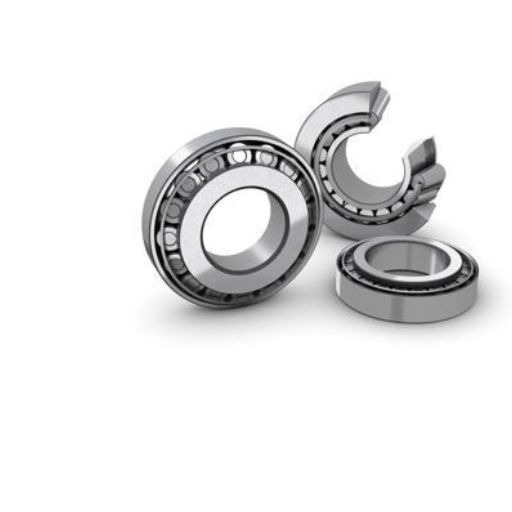
Comparing Friction and Performance
Compared to roller bearings, which perform relatively well under heavy lateral loads but create slightly higher friction, ball bearings are more effective in high-speed applications due to lower friction.
|
Factors |
Ball Bearings |
Roller Bearings |
|---|---|---|
|
Friction |
Low |
Moderate |
|
Speed |
High |
Moderate |
|
Load |
Medium |
High |
|
Lifespan |
Medium |
Long |
|
Noise Level |
Quiet |
Moderate |
|
Best Use |
Precision |
Heavy load |
Load Capacity and Speed
Ball bearings and roller bearings operate differently based on load capacity and rotational speed. Ball bearings are used for lower load capacities since the contact between the balls and the raceway is minimal, enabling smooth rotation. Ball bearings are helpful in high-speed applications like computer fans, aerospace equipment, and electric motors, which need precise and efficient performance at high speeds.
On the other hand, roller bearings can support significantly higher axial and radial loads than ball bearings. This is largely due to their cylindrical rolling elements, which increase the contact area. However, the increase in friction limits the speed capabilities of roller bearings about ball bearings. Roller bearings are best suited for heavy-duty machinery like conveyor belt systems and industrial gearboxes that need high endurance under load.
Recent changes to materials used in construction, as well as lubrication technologies, have enhanced the performance of both types of bearings. For example, the creation of ceramic coatings and synthetic lubricants facilitates maintaining consistent speeds and controlling thermal degradation and wear, which improves energy efficiency. Also, precision engineering together with computer-aided design allows manufacturers to tailor bearings for particular applications, optimizing their geometry to achieve an ideal compromise between the required stiffness and rotational speed.
Choosing the Right Bearing for Your Needs
Choosing the best bearing for an application is very important because it can greatly impact the performance and lifetime of the system. To make the selection easier, there are a few critical factors that must be addressed:
- Load Type and Magnitude
Bearings have a specific limit depending on the type and magnitude of load conditions that they can withstand, such as a combined load of radial or axial. Balance is necessary between the types of loads applied to avoid premature or unplanned failure. For example, ball bearings are great when subjected to light radial loads, while roller bearings are better suited to withstand heavy axial and radial forces.
- Operating Speed
The operating speed is often the primary consideration while selecting the bearing. Bore can run on the big side of the range with little to no additional loading, so if clearance can be made tighter than normal, it provides the speed necessary to reduce heat creation while maintaining efficiency, while low-speed applications don’t face this issue. For instance, angular contact ball bearings are recommended for use in speeds as well as in heavy-duty rotating equipment owing to their effective support of both axial and radial forces.
- Environmental Conditions
Protection against excessive moisture, dust, scorching heat, and harsh weather conditions determines the type of materials and lubricants to be selected. To combat such stressors, sealed and shielded bearings, along with some special coatings such as ceramic or anti-corrosion coatings, are ideal.
- Alignment and Misalignment Tolerance
Bearings designed to compensate for the changes in shaft alignment allow for applications where such deviations may occur. Conditions that exert added operational stress are better tackled using self-aligning ball bearings or spherical roller bearings, which aid in reducing the stress.
- Maintenance and Durability Considerations
For minimal maintenance and long upkeep, systems with low operating service life should have long-life lubrication or other engineered surfaces. In heavy industrial applications, preloaded and well-lubricated tapered roller bearings are commonly used, which provides optimal balance between durability and efficiency.
Application of these aspects with the in-depth requirements given by the producers ensures effective operation of the bearing that has been chosen. Engineers may be assisted to a greater degree by using advanced instruments like simulation software and product configurations, which model loads and suggest optimal bearing configurations for different applications.
Choosing the Right Bearing for Specific Applications
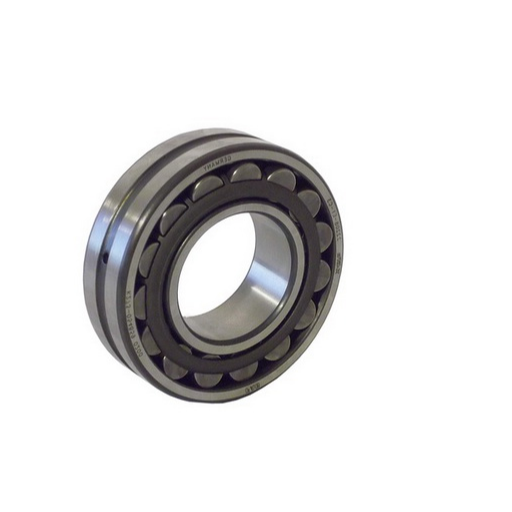
When to Use Ball Bearings
For systems that work at high speeds, accommodating both radial and axial loads requires the use of special components. In terms of precision applications, I rely on ball bearings because their design features low friction and permits rotation under varying conditions, which is smooth and efficient. These factors make them best suited for application in electric motors, gearboxes, and other machines that have rapidly spinning parts since they need precision and stability.
In an environment where low maintenance is preferred, I opt for ball bearings. Because of their compact design and use of rolling elements, ball bearings are known to have lower wear rates when properly lubricated. This increases their cost effectiveness when used in automotive, aerospace, and robotics, where downtimes and maintenance must be minimized.
Finally, I analyze the operating conditions, which include temperature, load capacity, and other environmental parameters, to examine whether ball bearings present the most feasible solution. Their versatility in the range of speeds and moderate load capacities is useful in so many applications. On the other hand, for very heavy loads, or particular conditions, I might consider other options such as roller bearings or specially designed for the application. Proper selection and application guarantee reliable performance and maximum efficiency for the intended system.
When to Opt for Roller Bearings
Bearing the brunt of radial loads is cumbersome for ball bearings, but roller bearings possess the ideal attributes needed to withstand them. As a result, they are used in heavy machinery or equipment that undergo rotational forces perpendicular to the rotor axis. Their cylindrical and conical rolling elements aid in protecting them under extreme conditions since the load is concentrated greatly across the area, thus causing stress concentration. This surge in surface area coverage greatly improves force impact resistance and enhances durability.
Shock resistance with extreme load durability makes roller bearings optimum for construction, mining, and manufacturing. These verticals rely on them the most for bearing supports. For example, tapered roller bearings endure axial and radial forces adeptly, enabling their use in gearboxes, turbines, and even axle systems. Furthermore, spherical roller bearings perform remarkably well in applications involving shaft vibration control or misalignment that occur in belt conveyors or vibrating screens.
Choosing the right type of roller bearings relies heavily on the bearing type decision-making tools and modern simulation technology that yield the best results, as far as operational factors like load type, environment, lubrication, RPM, and bearing life reliability conditions are taken into account.
Factors to Consider in Bearing Selection
- Load Characteristics
Identify the type and value of the load the bearing is expected to bear. It can be classified as radial, axial (thrust), or a combination of both. For example, deep groove ball bearings are suitable for pure radial loads, while tapered roller bearings are preferred for high mixed loads. The bearing is less likely to fail or wear prematurely if the load is analyzed properly.
- Speed Requirements
How fast the application can rotate is an important consideration while choosing a bearing. Bearings have design speed ratings (often called limiting speed or reference speed) which should not be exceeded to prevent overheating or lubrication failure. Specialised bearings like angular contact ball bearings may be required in high-speed applications.
- Operating Environment
Dust, chemicals, moisture, and temperature extremes are some of the external elements that may influence bearing performance. For sealed environments, materials such as stainless steel or ceramic that are resistant to corrosion are recommended.
- Lubrication Needs
Proper bearing function at low friction and wear requires sufficient lubrication. Depending on the circumstances, lubrication can be in the form of oil or grease. Synthetic grease is helpful in high-temperature applications, whereas oil-air lubrication is suitable for high-speed operation with low thermal expansion.
- Material and Manufacturing Quality
Dependable and sturdy bearings mostly depend on the materials used in the construction, alongside the precision grade of their manufacture. The implementation of high-grade steel alloy or even ceramic materials enables superior strength and fatigue life, as well as wear under difficult conditions.
Fulfilling the aforementioned considerations allows engineers to improve performance and system longevity while lowering maintenance expenses associated with their applications.
Types of Roller Bearings and Their Uses
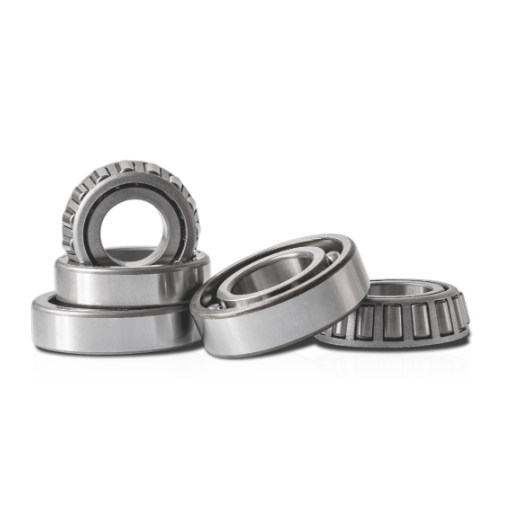
Understanding Cylindrical Roller Bearings
Cylindrical roller bearings have a crucial application in industries where there is a need to accommodate large speeds and reliable operation, such as electric motors, turbines, and gearboxes, as they are built to withstand large radial loads and allow some axial displacement.
Due to the construction of these bearings, where the rollers are in linear contact with the raceways, as opposed to point contact in ball bearings, there is an increase in the load carrying capacity. In comparison to other bearings, cylindrical roller bearings have more features like offering balance to thermal expansion and contraction due to working machines, elevation of stability, mitigation of skewing due to flange guidance, sliding tracks, and easy maintenance through separable inner or outer rings. This offers assistance for divided bearing arrangements, ensuring effortless construction and servicing in intricate mechanisms that don’t involve sophisticated devices.
Cylindrical roller bearings withstand extreme radial forces and can operate at high speeds, and because of these factors aid in high reliability and more powerful performance when used in gear ratios to turbines. Cylindrical roller bearing technology today involves improving the materials used and the methods of lubrication. Bearings made from treated steels and heat-treated surfaces have smoother finishes, resulting in lower friction and longer-lasting fatigue life under extreme stress. Moreover, industry standards about maintenance and utility reliability were met due to the low maintenance requirements of modern low-viscosity lubricants and sealed bearings. Data indicates that the operational lifespan of optimized cylindrical roller bearings increased by up to 30% in high-stress environments with adequate lubrication and proper alignment.
Exploring Spherical Roller Bearings
Spherical roller bearings are vital parts of heavy machinery and equipment in industries because they can support both radial and axial loads simultaneously. Their construction includes two sets of rollers with a shared spherical raceway on the outer ring. This feature makes it possible to maintain self-alignment, even in the presence of shaft misalignment as a result of mounting error or operational deflection. Equipment like vibrating machinery, mining tools, and conveyor systems where significant loosening of parts occurs is suitable for the use of these bearings because of their self-adjusting capabilities.
Improvements in materials constituents, surface treatment technologies, and protective coatings impact the operational efficiency of spherical roller bearings. The use of heat-treated steels and protective oxide or ceramic coatings greatly hampers the corrosion, wear, and fatigue resistance, thereby improving overall component life. These enhancements trim the chances of failure occurring in highly contaminated environments with inconsistent lubrication. Evidence from research shows that special coatings on spherical roller bearings result in a 25 percent increase in operational life over standard bearings in challenging working conditions.
Also, today’s spherical roller bearings are made to maximize the lubrication flow. Structures such as lubricant grooves and holes in the outer ring permit complete distribution of grease or oil throughout the bearing’s contact surfaces. This helps not only in minimizing friction but also in lowering the operational temperatures, which increases efficiency and durability. With the addition of advanced sealing solutions, these bearings are much less demanding in terms of maintenance and still perform well under arduous conditions. Such features validate spherical roller bearings as the primary selection for sophisticated engineering works where high dependability and extended service life are a prerequisite.
What Are Tapered Roller Bearings?
Tapered roller bearings are specialized elements intended to carry a combination of loads, both radial and axial. They have an inner ring, an outer ring, a set of rollers, and a cage that is required to space the rollers. The rolling parts have a cone shape. This characteristic helps the bearing to take large axial loads in one direction and, at the same time, receive radial loads. The ability to perform both functions makes tapered roller bearings an important part of different mechanical systems, including those that require strength and high loads.
The contact angle, which is affected by the taper, determines the degree to which a bearing can accept axial forces. End use of tapered roller bearings, like car transmissions and other shaft-driven heavy equipment, requires large axial and radial forces; therefore, bearings with large contact angles are required. Also, the best alignment of raceway and roller is crucial to provide even forces, thus minimizing wear and maximizing lifespan. Materials of construction and form of manufacture, as well as whether the bearings withstand harsh conditions and high extremes, subsequently increase component wear.
Recent developments in the technology of tapered roller bearings have also targeted energy efficiency and maintenance to further improve automation. Enhanced internal shapes, more sophisticated and applied coatings, as well as better lubrication systems, have all resulted in reduced frictional forces and greater thermal stability, which is a necessity for friction-induced heat. These developments are particularly useful in high-speed rotating systems like wind turbines, railways, and industrial gearboxes. The powerful construction combined with high reliability proves the importance of tapered roller bearings in modern engineering and machine development.
Frequently Asked Questions (FAQ)
Q: What is the primary difference between ball and roller bearings?
A: The primary difference between ball and roller bearings lies in their design and application. Ball bearings use spherical balls to maintain the separation between the bearing races, while roller bearings use cylindrical rollers. This structural difference allows ball bearings to handle higher speed applications, whereas roller bearings excel in applications that require greater load carrying capacity due to their larger contact area.
Q: How do ball bearings compare to roller bearings in terms of speed?
A: Ball bearings are often preferred for applications requiring higher speed as they generally have lower friction compared to roller bearings. The point contact in ball bearings reduces friction, making them ideal for high-speed applications.
Q: In what applications are roller bearings considered ideal?
A: Roller bearings are designed for applications that require handling heavier loads. They excel in situations where durability and load capacity are more critical than speed, making them ideal for industrial roller bearings and heavy machinery.
Q: What are thrust bearings, and how do they relate to ball and roller bearings?
A: Thrust bearings are a specific type of bearing designed to accommodate axial loads. Both ball and roller bearings can be made as thrust bearings, with ball thrust bearings suited for lighter loads and higher speeds, while roller thrust bearings are used for heavier axial loads.
Q: What factors determine which bearing type to use?
A: The choice between ball and roller bearings depends on the specific requirements of the application. Key factors include load type and size, speed, durability, and the environment in which the bearings will operate.
Q: What is the role of the inner and outer rings in bearings?
A: The inner and outer rings are crucial components of both ball and roller bearings. They provide the tracks along which the balls or rollers move, and their design impacts the bearing’s ability to handle different loads and speeds.
Q: How do roller bearings excel in industrial applications?
A: Roller bearings excel in industrial applications due to their ability to handle heavy radial loads and their durability. Their design, featuring larger contact areas, makes them suitable for heavy machinery and industrial roller bearings.
Q: What is the significance of the bearing block in bearing systems?
A: A bearing block, also known as a pillow block or plummer block, is used to provide support and secure the position of a bearing. It is essential for ensuring the proper alignment and operation of both ball and roller bearings.
Q: What are some common misconceptions about ball bearings vs roller bearings?
A: A common misconception is that ball bearings are always superior to roller bearings. In reality, each type of bearing has its strengths; ball bearings are preferable for higher speed applications, while roller bearings are ideal for heavy load situations. The choice depends on the specific needs of the application.
UCTH213-40J-300 with Setscrew(inch)
CNSORDERNO: Normal-duty(2)
TOGN: UCTH213-40J-300
SDI: B-R1/8
SD: 2 1/2
UCTH212-39J-300 with Setscrew(inch)
CNSORDERNO: Normal-duty(2)
TOGN: UCTH212-39J-300
SDI: B-R1/8
SD: 2 7/16
UCTH212-38J-300 with Setscrew(inch)
CNSORDERNO: Normal-duty(2)
TOGN: UCTH212-38J-300
SDI: B-R1/8
SD: 2 3/8
UCTH212-36J-300 with Setscrew(inch)
CNSORDERNO: Normal-duty(2)
TOGN: UCTH212-36J-300
SDI: B-R1/8
SD: 2 1/4
UCTH211-35J-300 with Setscrew(inch)
CNSORDERNO: Normal-duty(2)
TOGN: UCTH211-35J-300
SDI: B-R1/8
SD: 2 3/16
UCTH211-34J-300 with Setscrew(inch)
CNSORDERNO: Normal-duty(2)
TOGN: UCTH211-34J-300
SDI: B-R1/8
SD: 2 1/8










